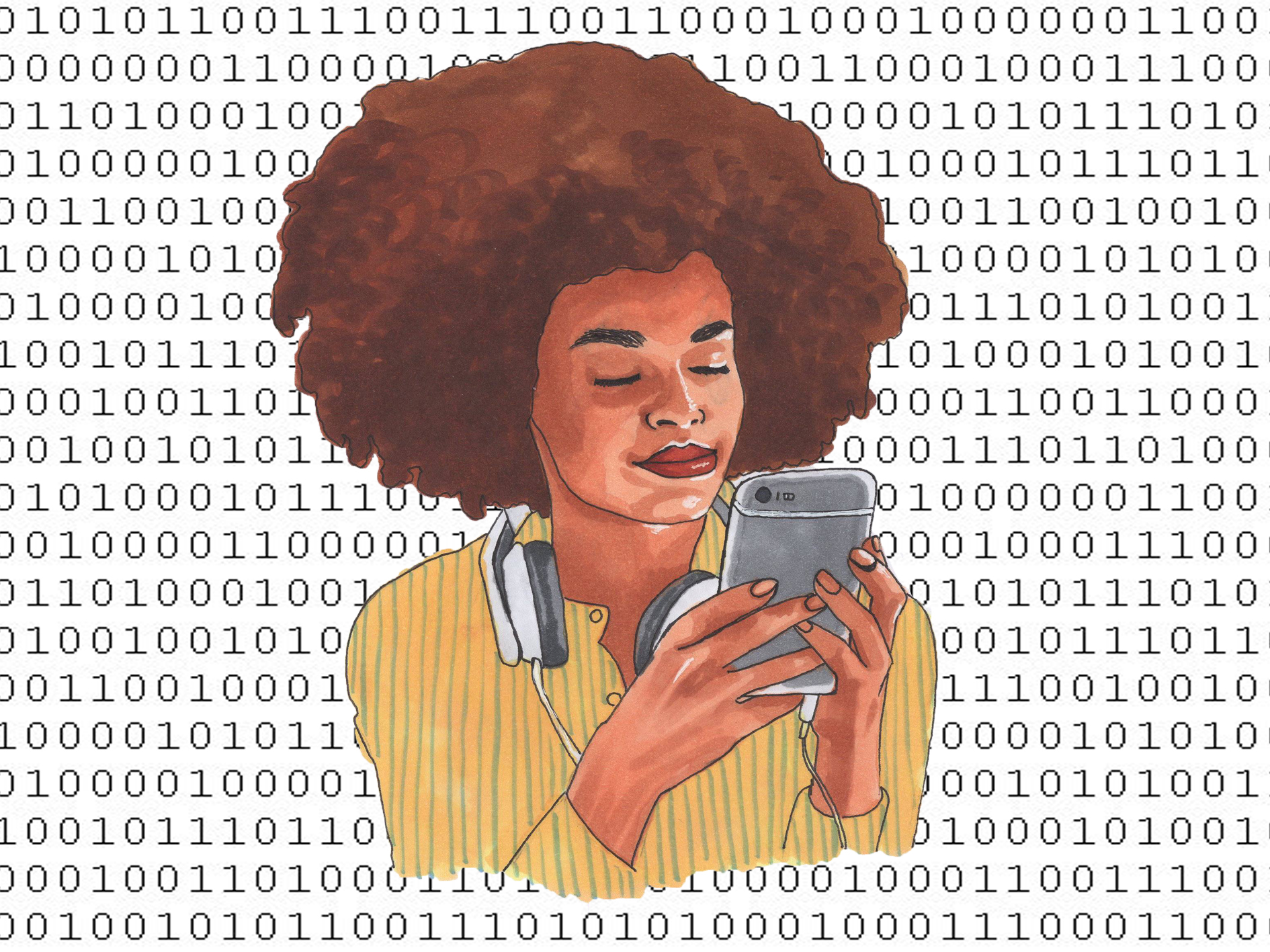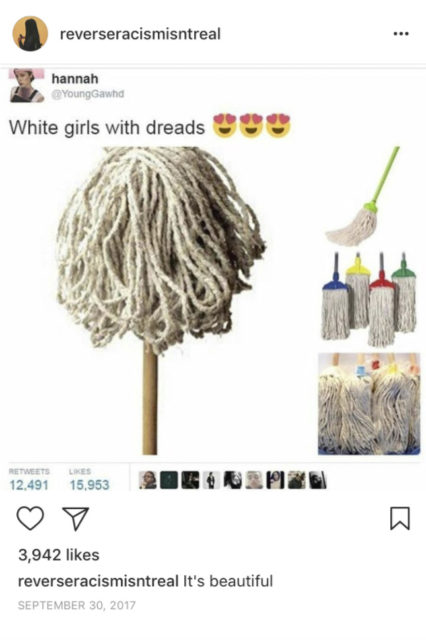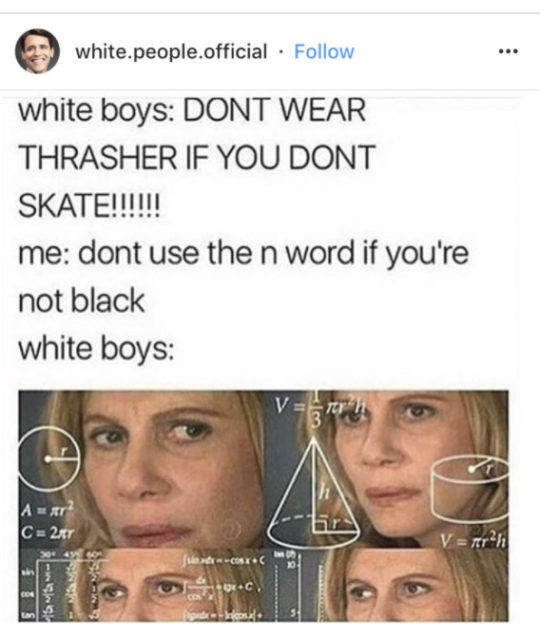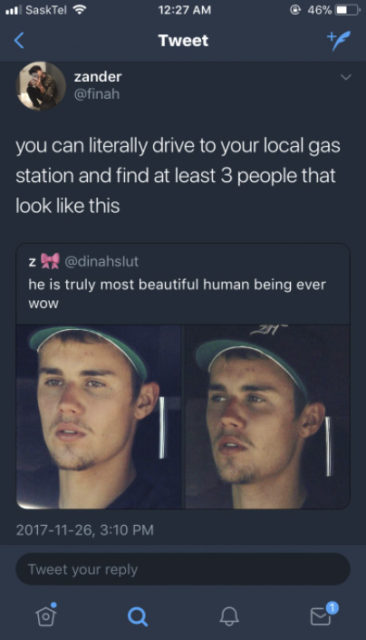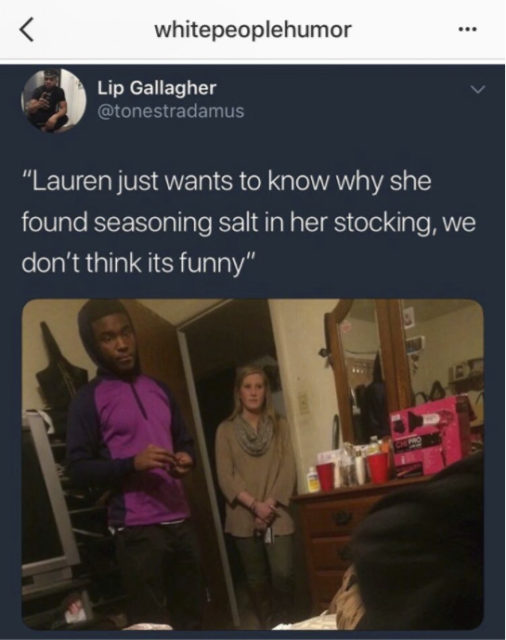Picture this:
It’s winter break. You’re on a couch, stuffing your one functional earbud further into your ear. You hope Bodak Yellow on full volume will drown out the brown aunties passive-aggressively one-upping each other on the basis of their kindergarteners’ grades. You open Instagram and make the mistake of laughing out loud at a meme on your explore page, earning a dirty look from your mother. “You know teenagers, always on their phones,” she says, and the brown ladies cackle in unison. You grimace, hoping it passes for a smile, and go back to scrolling. It’s the only anchor you have to get through the annual Desi Christmas party.
Maybe you’re not Desi, but if you’re a millennial you’ve probably been in this situation. Whether it was at the community holiday dinner, in the elevator, or during your 8:30 lecture, you’ve scrolled through your phone double-tapping random memes till your thumb was sore. You were judged, if not by the people around you, by your own self for wasting your time like this. But at the same time the impulsive scrolling was a coping mechanism, if not for your immediate context then for life in general.
In the age of the Internet, social media functions as a primary mode of communication for North American millennials. And on social media platforms, memes reign supreme as one of the preferred mediums of social expression. But browsing memes is seen as a method of procrastination and is widely scorned. This condemnation is an unfair one; there are positive aspects to meme culture, particularly for marginalized groups (case in point: you, at the Desi Christmas party. Those memes were your lifeline). But before delving into the details of this claim, let’s cover the basics of memes.
Memes: what are they?
Despite complexities that arise from racial and socioeconomic divisions, the vast majority of young North Americans use the Internet. It is this accessibility of the Internet, and consequently social media, that paves the way for memes to take on the significance they do in North America.
A meme is any text, with or without a visual component, propagated on social media containing an element of humour. They follow recognizable formats that are easily replicable, allowing them to go viral with ease.
When we see memes on our Facebook newsfeed or Instagram explore page, we feel compelled to like them, tag our friends in them, and even follow the accounts that post them. Eventually, memes permeate our social media and engaging with them becomes a natural part of our lives. Frequent engagement with this type of media guarantees that memes become highly integrated into our daily routines. Our constant interaction with memes gives them the power to shape socio-cultural discourses. In other words, memes are not only humorous images, they are also social statements that reflect and shape the dynamics of youth culture in North America.
Further intersections of identities (e.g. queer, neurodivergent, disabled, racialized) give rise to specialized memes that appeal to specific demographics. As a person of colour, I can attest that our experience as racialized youth is distinctive. To reflect this distinction, we have our own memes that touch on the dynamics of our specific experiences. Some of these memes are referred to as “white people memes,” and their significance to youth of colour will be the focus of this article.
White people memes: are they really that deep?
The reason we readily dismiss meme-browsing as a frivolous activity is because we perceive memes as entirely separate from “the real world.” The apparent basis for our consumption of memes is the distraction it provides from the daunting realities of our professional lives or lack thereof. Internalizing this dichotomy has led us to overlook the fact that the ideas we communicate through memes hold the truths of our experience as youth, and in the context of this article, as racialized youth.
So, yes. Memes really are that deep — critically engaging with memes reveals a lot about our culture and the ways in which we can transform cultural discourse to be anti-oppressive and anti-racist.
White people memes discuss issues of race, therefore they are inherently political. The popularity of white people memes has politicized the communication spaces used by racialized youth, demystifying the politics of race and making the discourses surrounding racism and white supremacy much more accessible. These memes have transformed the conversation surrounding race to include and even amplify the voices of youth of colour. In essence, they provide a humoristic outlet for discussions around race.
Satirization and empowerment
The type of humour employed in white people memes is satire, i.e. the exaggeration and ridicule of aspects of society in order to expose the weaknesses of the established order. White people memes use a technique of subversion to illustrate the hypocrisies and injustices inherent to race relations in North America.
Subversion entails a sort of role reversal. White people memes turn white dominance on its head by mocking the behaviours that stem from white privilege. Through this act of challenging what we have internalized acceptance for, white people memes pick at the very threads of casualized racism that are woven into our social fabric.
White people memes empower youth of colour. They create a contained universe where the existing social order is completely overturned, where white supremacy is made obvious, and then made fun of. This is a universe where white people are the ones made to feel singled out and marginalized, where the kids of colour are the ones in on the joke for once, allowing us to experience power. It’s a sense of collective power—of being in on the joke together—and it’s this fleeting feeling that makes white people memes so funny.
The Incongruity theory, most famously posited by Kant, explains that we find humour in things that contradict our established thinking patterns. The shift in power dynamics is unexpected and this is at the core of why we find jokes about white privilege so funny.
Plato and Aristotle also explained humour with the Superiority theory, suggesting that people laugh when they feel triumphant over others. In the context of white people memes, the role reversal puts people of colour in a position above white people. The evocation of temporary joy and a hint of spite is a way to manage and eject pent up frustrations brought on by living under white supremacy.
Don’t believe any of this? Let me walk you through it.
Here, the original tweet contains several images of mop heads. The caption reads “White girls with dreads,” followed by a row of heart-eyed emoticons. It’s a simple format, but the allusion to cultural appropriation is powerful. Comparing white girls’ dreads to a mop indicates how distasteful they really are, further communicating that all they are good for is cleaning the floor. It feels good to unabashedly insult white girls who claim black fashion as their own while conveniently ignoring the uglier realities of black identity and the obstacles black women face when they wear natural hairstyles in the workplace or at school and the obstacles black women face when they wear natural hairstyles in the workplace or at school. The ironic use of the heart-eyed emojis mocks the pseudo-innocent excitement of white girls sharing their culturally appropriative hairstyles on social media.
This meme is making fun of the fact that white people are perfectly capable of grasping the concept of ownership, as long as there are no people of colour involved. To them, fighting to make street fashion exclusive is far more legitimate than letting black people reclaim a word they paid for in blood. The contrast between the all-caps and all- lowercase dialogue perfectly captures the differing rationality of each party. This meme works to invalidate the logic of white supremacy using the image of the confused white lady with math formulae floating around her face.
Here we see two contrasting statements made about Justin Bieber with stubble. But this is bigger than Bieber: what this is really about is the whitewashing of beauty ideals. Bieber, like most white men, is hailed as attractive by default. It’s pointing out that we define the standard of beauty by the features typical of white people. This meme also flips the white supremacist notion that all people of colour “look the same,” turning the sentiment back on to white people.
This photo of the Black man with his hands clasped while his white girlfriend leans on the doorway behind him has been captioned a million different ways. But all of them were a variation of picking a generic white name for the woman, then making up a scenario where she was insulted at Christmas dinner by his Black family. This particular tweet is making fun of the fact that white people food doesn’t taste like anything. It also alludes to the way in which white women position themselves as victims of people of colour, in particular of Black folks. Moreover, in this scenario, the white woman is using the privilege of the desirability of her whiteness to turn her Black boyfriend against his family, using him as a shield for her own violence. We can only imagine how his family will ridicule him for this comment. The humour here is particularly complex because the allusion to Black men choosing white women as partners over Black women implies internalized racism.
Healing and reclamation
Despite being a person of colour, my upbringing was very whitewashed. This is attributed to the history of colonialism in my country of birth. I was taught to avoid the sun so my skin would stay as light as possible. I was only allowed to speak English, because it was almost shameful to be fluent in my mother tongue. I never saw a film produced locally; my only media exposure was to Disney and Nickelodeon. In short, I was lulled into thinking I was white. Of course, the damage was considerable. Denying the reality of my identity was at the root of serious body image issues I struggled with until recently. But I didn’t realize this until I moved to Canada and started using social media.
My initial reaction to white people memes was defensive. I said things like “not all white people,” “reverse racism won’t solve anything,” “race doesn’t matter; we’re all just human.” For so long, I had sought proximity to whiteness. I had deeply internalized the need for white approval.
But a meme isn’t just words on a picture; it comes with the social media platform used to share it. So I read the arguments in the comment sections and pondered over the snarky captions. I asked myself “Why would it be okay to laugh at this?” There began my journey of learning the complexity of oppression.
Memes provide youth of colour an opportunity for self-reflection. The dissonance between the racial status quo and the insurgent tone of meme content probes the assumptions underlying our internalized racism. Memes play an important role in consciousness-raising, in that they expose us to notions that we then realize lie at the root of a lot of our self-hate.
Professor Carrie Rentschler at McGill University, an expert in Feminist Media Studies, says, “Memes are a response to dominant discourse. To laugh at them together is important on an affective level.” So after we untangle the intricacies of our self-loathing, youth of colour can come together to build community through sharing these memes. A first year student at McGill, Neyah McNab echoes Rentschler’s view: “I wasn’t proud to be Black. Especially in predominantly white environments, I felt excluded, I felt like I didn’t belong. Laughing at and tagging my friends in memes really helped me find a sense of community.”
Christina Lau, a U1 Management student, has also found community through meme-sharing. Referring to the grocery store meme above, in which white people homogenize Asians, Christina says, “White people constantly lump us into one group and rarely put in the effort to educate themselves on the many different countries and cultures that are in Asia. Memes like this one help remind me that the microaggressions I face where white people question my identity and then try to correct me (e.g. someone once told me I was Korean, but I’m Chinese) are not rare occurrences. While this does make me sad it also makes me feel more connected to hundreds of people going through the same thing.” The humour of memes is also where we find their healing potential: laughing together destroys the alienating force of white supremacy on people of colour.
This community-building for youth of colour instigated by white people memes is powerful. These shared communication spaces offer validation for seemingly indescribable and abstract elements of the racialized experience. Through validation, we find grounding and relief. We find healing. The co-admin of Instagram McGill meme page @burnsidebasementsoupcafe69 says, “I know finding meme accounts that mirrored my lived experience produced this feeling of what I can only describe as relief. Something about seeing your hardships reflected in such an easily shared piece of media is really incredible. I think it makes a lot of my experiences feel more coherent.” They added, “Maybe this sounds shallow, but I’ve used memes to vent about my experiences with racism and interactions in predominantly white spaces, and there’s something wildly comforting about watching likes roll in on those grievances.” White people memes provide the space for communities of colour to form online, and these communities provide space for healing from white supremacy and internalized racism.
Other admins of popular activist meme accounts also discussed how managing their platforms helped their personal healing process. @inter.sectional.femini.st says, “For me, it’s mostly about creating a place for people to come and rant about their problems or seek advice. It also helps me because I can use that space too, and my followers come and help me and reach out to let me know they’re there for me.” The healing that takes place in these online spaces sparks courage in youth of colour to confront the system of white supremacy. Memes endow racialized youth with the power to challenge and reclaim cultural narratives.
My anti-oppression education began after my exposure to white people memes. School had never taught me that racism was systemic, what intersectionality meant, or how colonialism basically shaped my entire existence. Because formal schooling exists within and is upheld by a historically colonial system, a raw discussion of race issues is taboo. It was only through my own efforts online and in conversation with friends that I had these revelations. But to talk about them, I had to demand a platform.
This experience of silence around race education isn’t unique to me. Christina Lau says, “My high school failed to even discuss the role of Asians in American history. I literally learned about the Chinese Exclusion Act through Instagram. All my history teachers were white, and they were reluctant to discuss apparently controversial topics that portrayed America in a bad light. Memes are so important to POC because they are allowed to touch on sensitive topics without a buffer.” Professor Rentschler affirms this, saying, “Through ridicule, memes call out the guise of polite racism. Memes shape public conversation in counter-public spaces.”
White people memes provoke online conversations that we, as youth of colour, find too difficult or daunting to initiate in physical spaces. The effects of being repeatedly exposed to memes that are at their core anti-racist tools can actually work to break down internalized racism and change the conversation surrounding white supremacy. By satirizing the racialized experience, they empower us to take charge of our circumstances. They help us find community and contribute to the process of healing from the wounds inflicted on us by racism. White people memes, trivial as they may seem, can be the start of a revolution.

